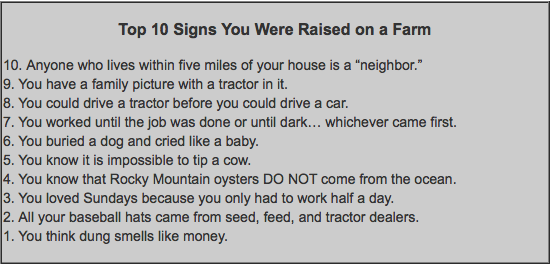Wealth Building Strategies
“Do you play the market?”. The answer should be a resounding no as the market is not a game. In fact it’s quite scientific. A trio of nobel prize winning economists each have created a model that better helps us to understand the science behind the market. Let’s see what Harry Markowitz, William F. Sharpe and Eugene Fama can teach us about the science of the stock market and of modern portfolio theory. Let’s watch….
“If you are serious about investing and building wealth the video documentary series ‘How To Win The Losers Game” is a must see. It’s excellent.
After watching the video if you want to learn more about better low-cost, long-term, low-maintenance, diversified investment strategies, download our free guide “12 Essential Ideas For Building Wealth” by clicking on the banner at the top of this page.
Paul Philip, Financial Wealth Builders Securities


The Evidence-Based Investor Video series is a service provided by Paul Philip and the team at Financial Wealth Builders Securities


While there is no doubt that access to growth capital is the fuel that grows a business, there is an alternative method to access capital and postpone an external financing round completely. For later stage companies, I strongly believe in an intense focus on the cash flow aspects of your business to raise internal capital first, before going to the outside. At a minimum, this approach can postpone an external financing, freeing up time and resources to grow the business; at a maximum, this approach may negate the need to raise external capital altogether.
A good business leader will fully leverage these three critical areas before considering an external financing:
Maximizing Sales: While the technology may be the heart of your business, if you can`t sell it, you have a hobby or a science experiment, not a business. If you are the Founder or CEO, at least 50% of your time should be spent on sales, either lead generation, prospecting or with current customers. The entire company should be aligned and focused on the revenue, including: a rigorous sales funnel process, clear sales accountabilities, regular review of sales metrics and actions on how to improve, and flawless execution of the product or service delivery. Everyone should be eating, sleeping and breathing customer service and revenue.
Maximizing Gross Margins: Your gross margin will tell you, whether you are digging a financial hole to oblivion or a creating a mountain of cash to success. Only by having a precise and firm understanding of your gross margins, by product and customer segment, for today and the future, will you know whether you are competitive, have a sustainable business and are producing the capital for growth. Maximizing gross margins will occur when you constantly incorporate market feedback to improve your pricing, while simultaneously driving cost out of your product through product redesign and leveraging low cost technologies.
Working Capital: Your gross margin will tell you, whether you are digging a financial hole to oblivion or building a mountain of cash to success. For any later stage technology business, working capital should invested in areas that significantly leverage the scalability of the company, such as: stream lining business systems (sales, product delivery and product development), fulfilling high gross margin orders, and promising / proven new market channels. Watch A/R and A/P closely and assign one individual with responsibility for this area.
If your market is growing fast and external capital can get you there even faster, by all means get it! However, self-financing is a great option for many companies. While it may be difficult, requiring a focus on the customer (revenue) and a relentless dedication to execution, the payback is worth every ounce of effort.


 My parents were hard-working vegetable famers in western Washington, but making ends meet was always a struggle.
My parents were hard-working vegetable famers in western Washington, but making ends meet was always a struggle.
My classmates laughed at my hand-me-down clothes and logger boots with holes in the soles, but I never went to bed hungry and my mother kissed me goodnight every night until I left for college.
Farm work was hard and I hated it—I mean really hated it—at the time, but I now think that those years on the farm were the foundation of the success that I enjoy today.
Moreover, there’s a surprising number of investment lessons that I learned as the son of a farmer.
Boring Work Is the Most Important Work
Farming is far from glamorous, but some of the work was dreadfully boring.
In the spring, my father would have me pick rocks out of the fringes of the farm, and in the summer, I spent thousands of hours on my hands and knees pulling up weeds. It was boring and seemed meaningless at the time, but every successful business needs a strong foundation, and the basic building blocks of preparing the soil is crucial.
The same is true of investing. Reading annual reports, financial statements, and balance sheets can be boring, but it is that fundamental, time-consuming research that sets you up for long-term success.
Summer Profits Come from Winter Efforts
My non-farmer friends assumed farmers took it easy during the winter. Wrong! Even when snow covered the ground, my father still worked a minimum of 12 hours a day. There may not have been any crops to harvest in winter, but there was always plenty of off-season work to do on the farm, such as repairing the farm machinery and mending fences.
My high school basketball coach used to scream at us that December games are actually won during the off-season workouts, and the same is true of investing. You make your profits before you buy a stock; not after you sell it.
Core and Explore
The most important decision any farmer makes is what to plant. The price of vegetables could vary widely from year to year, and many farmers would play a Green Acres version of roulette by trying to anticipate what the “hot” vegetable of the year would be.

Not my father; he stuck to red radishes and green onions for roughly 80% of our farm and gambled with the last 20% of our land on what crops he thought could deliver big payoffs.
I do the same with my portfolio today; I keep the vast majority of my portfolio in stable, established blue-chip companies that pay generous dividends and use the last 20% or so for more speculative bets (including shorts and put options).
Profits, Not Revenues
What makes one farmer more successful than the other? Many of our neighboring farmers also grew radishes and onions, but what made my father more successful than others was that he knew it isn’t how much you harvest, but how much profit you make on what you do grow.
My father was a very frugal man, and he seldom bought anything if it wasn’t on sale, so his cost was lower than most of his competitors’.
I’m a cheapskate too, so I seldom buy stocks unless they go on sale. You’ve probably heard the warning, “Don’t try to catch falling knives.” Well, I love falling knives, and I think that I’m one of the best falling-knife catchers in the world, so you won’t see me buying stocks at 52-week highs.
Plow Under Your Mistakes
Sometimes things just went wrong on the farm. Insects would infest our crops, some months were too wet and triggered mold outbreaks, and some years frost would come too early or too late and damage the crops. Instead of spending too much time and/or too much money on rescuing the damaged crops, my father would often plow them under and start over.
My father was a big believer in cutting your losses and moving on. The same applies to investing, but I find that many investors are too stubborn to admit a mistake or want to wait until they “break even” before selling.
Expect Storms
Whether or not my father had a good year depended on three things: (1) no late frosts, (2) no early frosts, and (3) no natural disasters like hail storms, tornados, droughts, or massive insect infestations.
While you can’t avoid disasters, you can plan for them and run for cover when they do come. The wise investor diversifies in anticipation of those things that are beyond his control and buys insurance to protect against catastrophic losses.
If the stock market turns ugly (which I believe it will), how prepared is your portfolio for catastrophe? If you’re worried, you might want to check out my monthly newsletter, Rational Bear (try it for 3 months with money-back guarantee).

Tony Sagami![]()
30-year market expert Tony Sagami leads the Yield Shark and Rational Bear advisories at Mauldin Economics. To learn more about Yield Shark and how it helps you maximize dividend income, click here. To learn more about Rational Bear and how you can use it to benefit from falling stocks and sectors, click here.

 “Simon. What do you personally invest in?”
“Simon. What do you personally invest in?”
This is a question I’m often asked, particularly at the start of the new year.
I’m a value investor, which means I buy high quality assets “on sale” for less than their intrinsic value.
This includes private companies, real estate, productive agriculture…
And it also includes public companies (stocks).
Now, I’ve been publicly critical of the dangers of investing in the stock market…
But value investing is the exception.
See, while most Wall Street pundits and financial advisors encourage investors like you and me to crowd into risky stocks at their all-time highs…
Value investing focuses on profitable companies run by competent management teams trading for – in many cases – less than the cash they have in the bank.
This is a glaringly obvious and straightforward strategy.
Look, where to invest your hard-earned savings is a deeply personal decision.
And to give blanket recommendations would be irresponsible.
But there is one particular place I encourage everyone to start:
First and foremost, invest in your financial education.
And second, consider the opportunity that value stocks present:
A SAFE way to diversify your assets into well-managed companies in promising jurisdictions all over the world trading for much less than their intrinsic value.
The challenge, of course, is having the patience and financial sophistication to FIND value stocks that fit this description.
It’s a lot like searching for needles in a haystack.
In Freedom,
Simon Black
Founder, SovereignMan.com
See, Tim has one of the most brilliant minds in finance.
Every month, he shares his incredible financial insight and top value stock pick inside Price Value International (PVI).
And right now, PVI is an absolute bargain at 50% off.
The speed at which your financial sophistication will jump to the next level is worth multiples of the heavily discounted purchase price.
And the cherries on top are his safe, well-researched stock picks backed by an impressive track record.
Just remember, the 50% discount you can get on Price Value Internationalexpires January 11th at midnight.
Click here to learn more about value investing and get your discount before it expires.












